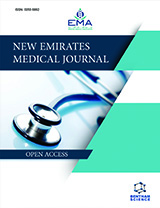Abstract
Objective: To evaluate the efficacy of the ultrasound-based Thyroid Imaging Reporting and Data System (TIRADS) in estimating the risk of malignancy in thyroid nodules by correlating it with the Bethesda system of thyroid cytopathology.
Methods: A retrospective single-center study was conducted in a specialty hospital in UAE from November 2017 to November 2019 on 259 thyroid nodules that underwent ultrasound and fine-needle aspiration cytology (FNAC). Thyroid nodules were evaluated using American College of Radiology (ACR) TIRADS and categorized as benign (TR1), not suspicious (TR2), mildly suspicious (TR3), moderately suspicious (TR4), or highly suspicious (TR5) for malignancy. The risk of malignancy associated with each TIRADS category was evaluated by comparing it with the Bethesda classification system of cytopathology.
Results: Ultrasound and FNAC data of 259 nodules were reviewed. Out of these, 33 (12.7%) nodules were excluded because FNAC revealed atypia of undetermined significance or follicular lesion of undetermined significance. The estimated risk of malignancy in TR 3 was 13.6%, TR4 was 27%, and TR5 was 63.6%. There was a statistically significant correlation between TIRADS and Bethesda system, which was determined using the Chisquare test (p < 0.001). The receiver operating curve (ROC) analysis revealed specificity of 81.3% [95% CI, 74.9 - 86.6%], NPV of 91% [95% CI, 87.1 – 93.8%] and accuracy of 77.9% [95% CI, 71.9 – 83.1%], when differentiating benign from malignant nodules.
Conclusion: The ultrasound-based ACR-TIRADS scoring correlates well with the Bethesda cytopathology in thyroid nodule risk stratification. Thus, it can be used as a simple and effective tool to decide further management and avoid unnecessary FNAC and surgeries in thyroid nodules.
Keywords: Thyroid nodule, Biopsy, Fine-needle, Cytodiagnosis, Ultrasonography, Risk assessment, Thyroid Imaging Reporting and Data System, Bethesda.






























